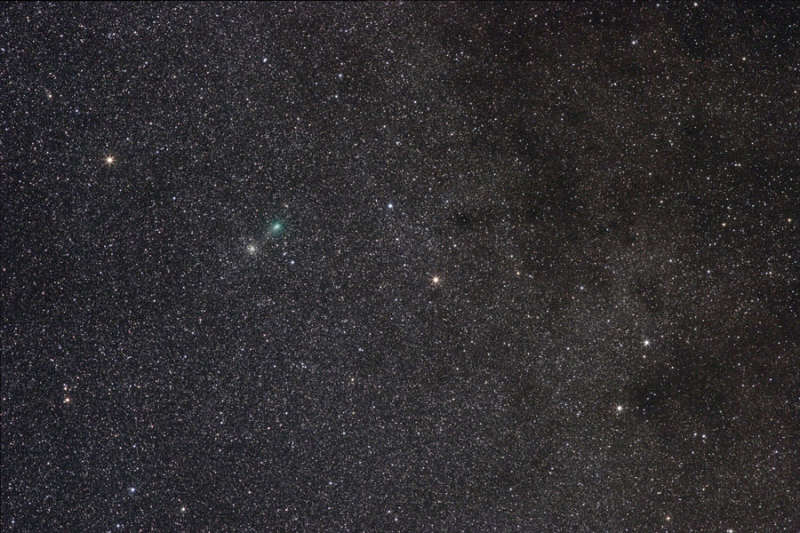Credit & Copyright: Richard Tresch Fienberg
(AAS)
Explanation:
Comet Garradd continues to brighten as it drifts across the northern sky.
Last week the comet, visible with binoculars and discernable by its
green coma,
passed nearly in front of globular cluster M71.
M71 was once thought to be
an open cluster, but is now known to be an older
globular cluster
containing over 10,000 stars.
The photogenic duo was captured with a standard digital camera in a 10-minute, wide-angle
exposure toward the northern constellation of the Arrow (Sagitta).
The stars
Sham (Alpha Sagittae),
Beta Sagittae,
Gamma Sagittae, and
the
double star
Delta Sagitta are
all visible in a
diagonal band running down from the upper left.
Comet C/2009 P1 (Garradd), will
remain visible in northern skies for months and will reach its closest approach
to the Sun in December.
1999 2000 2001 2002 2003 2004 2005 2006 2007 2008 2009 2010 2011 2012 2013 2014 2015 2016 2017 2018 2019 2020 2021 2022 2023 2024 2025 |
Yanvar' Fevral' Mart Aprel' Mai Iyun' Iyul' Avgust Sentyabr' Oktyabr' Noyabr' Dekabr' |
NASA Web Site Statements, Warnings, and Disclaimers
NASA Official: Jay Norris. Specific rights apply.
A service of: LHEA at NASA / GSFC
& Michigan Tech. U.
|
Publikacii s klyuchevymi slovami:
comet - globular cluster - komety - Sharovoe skoplenie - Strela
Publikacii so slovami: comet - globular cluster - komety - Sharovoe skoplenie - Strela | |
Sm. takzhe:
Vse publikacii na tu zhe temu >> | |
